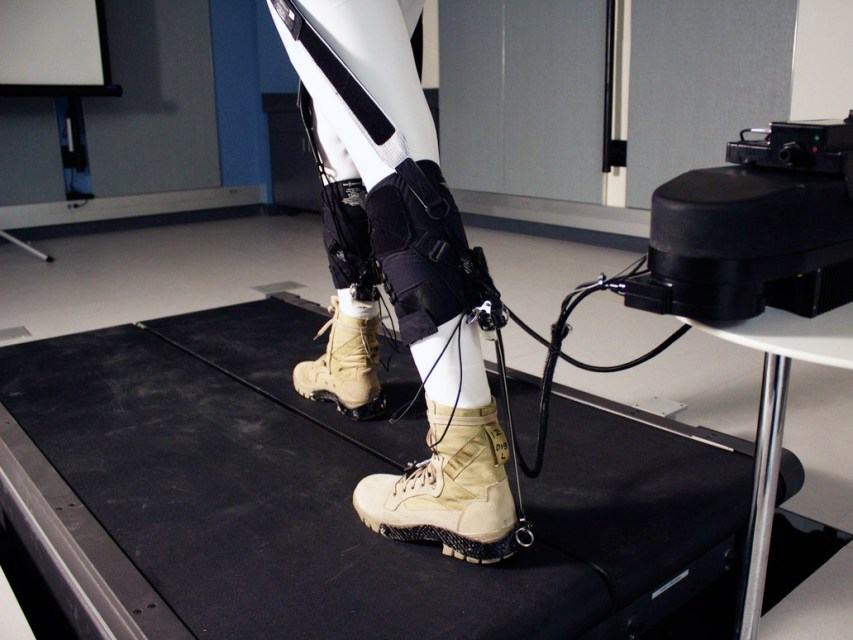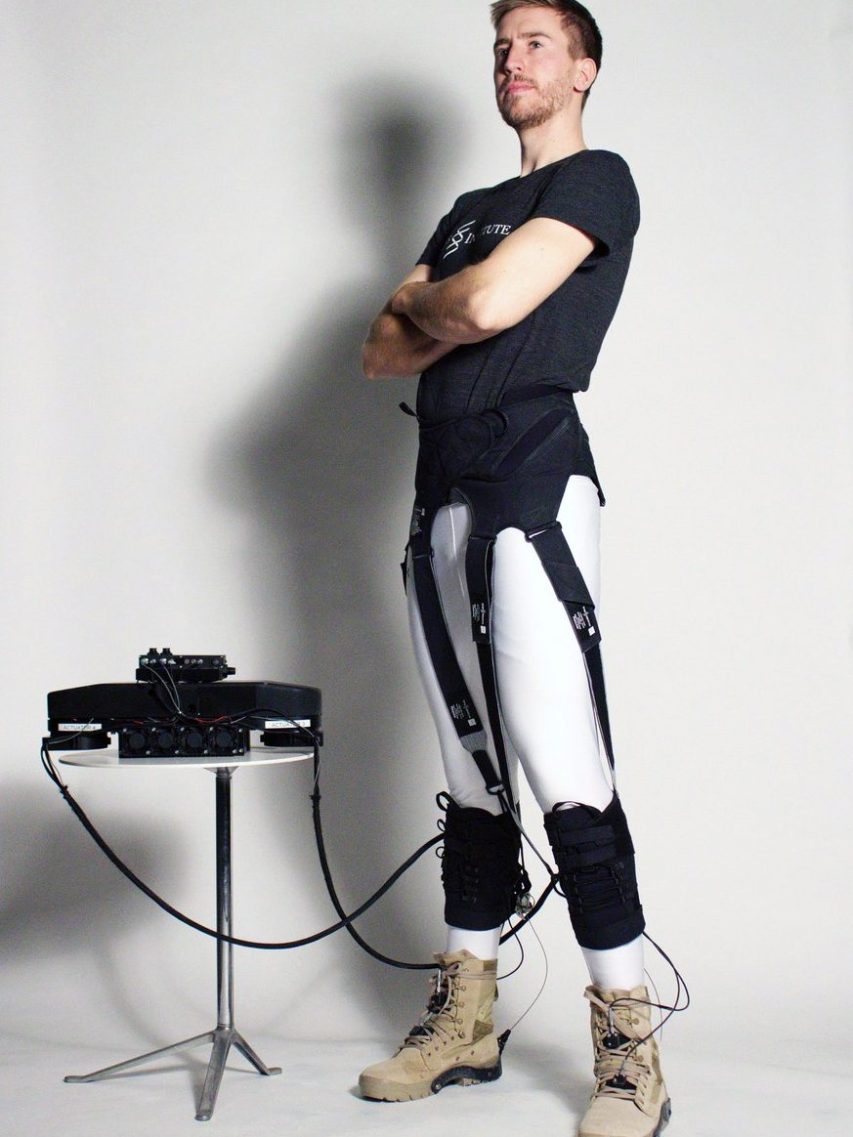
You could say that the human body works like a machine. So it begs the question: Can we improve upon it, making the body more efficient without putting it through the ringer at the gym? A team of Harvard researchers thinks so.
When taking a step, muscles and ligaments from the ankle to the hip all work together in a coordinated manner to move the leg forward. For able-bodied individuals in everyday scenarios, the body works like clockwork. But, for those with disabilities; or say, soldiers or factory workers, who carry heavy loads all day, each step is a strain on all of those muscles. What if the human body took lighter steps? Could that daily wear and tear be alleviated?
Harvard’s Wyss Institute researchers have developed a soft suit outfitted with wearable robotics that does exactly that—targeting specific leg joints to deliver synchronized assistance with each step. Taking the innovative study beyond the proof-of-concept stage unveiled in November, the multidisciplinary team of scientists were able to quantify that by wearing the exosuit, humans could save 23 percent of the human energy typically used when walking (see above).
Through a combination of functional textiles, cable-based actuation, and a biologically inspired control system, the exosuit targets the ankle joints to help transfer energy to the front of the hip. Other exosuits have employed similar mechanics for wearable robotic assistance, but this is the first to incorporate a specialized fabric that amplifies the effect of such robotics. In fact, the weight of some robotic assistance suits can actually make work harder for people doing certain tasks.

Looking forward, the team will have to study the effects of a full-body exosuit with the added weight of a battery pack and an actuator needed to power the robotics. The current research, published in Science Robotics, was conducted without these extraneous components. Find out more about the exosuit here.
—RealClearLife Staff
This article was featured in the InsideHook newsletter. Sign up now.






















